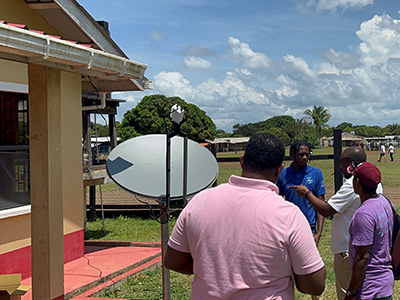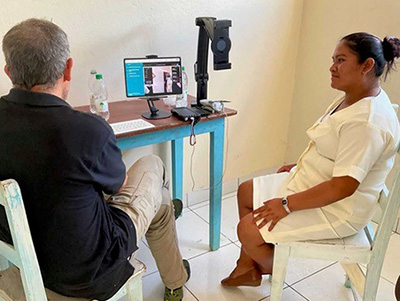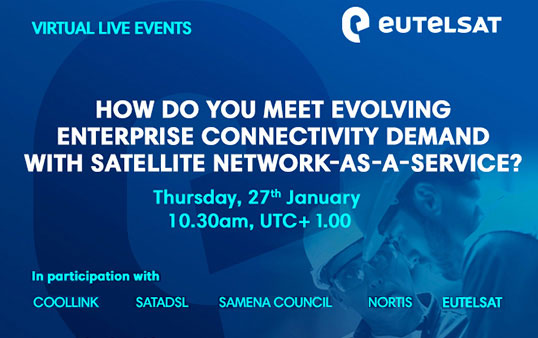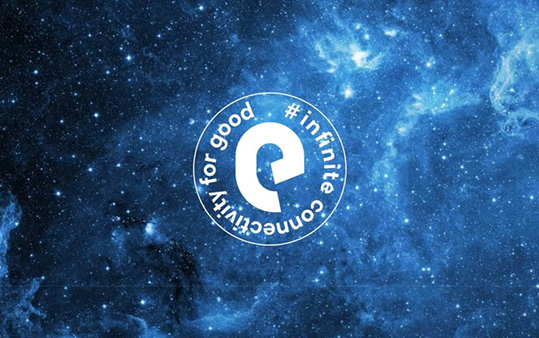Satellite Broadband Brings Medical Services To Communities Across Guyana
A satellite-enabled telehealth solution connected thousands of remote residents across Guyana with life-saving medical care during the COVID-19 pandemic
Guyana is a country nested on South America’s North Atlantic coast, defined by its dense rainforest and low population density. While most of its 800 000 population lives on the coast, there are numerous small settlements in the country's interior. The country's geography doesn’t allow for terrestrial infrastructure, depriving many of the isolated small settlements of vital communication services. While the Guyana government has been attempting to tackle this challenge for a long time, it was the COVID-19 pandemic that delivered the solution.
Telehealth in times of COVID-19
The COVID-19 global pandemic brought to light some of the more severe gaps in healthcare systems around the globe. While urban areas were battling shortages of beds, staff, and medicine, remote areas were cut off from critical medical care services altogether. Many of the remote villages in Guyana lack a resident doctor and medical infrastructure, so when the pandemic hit, the residents of those areas were even more vulnerable due to a lack of accessibility. In light of this dire healthcare crisis, the Guyana government began looking for solutions that could be quickly deployed to provide critical medical care for thousands of Guyanese citizens outside of the urban areas.
Telehealth solutions have been used in many remote parts of the world where medical care isn’t readily available on-site. For telehealth solutions to be viable, the minimum requirement is good bandwidth, and the lack of terrestrial infrastructure in Guyana was the biggest roadblock to the success of this initiative.
A satellite solution for a healthcare problem: a collaborative effort of Eutelsat, i-Net Communications & 19Labs
 With Guyana’s challenging geography, building a terrestrial infrastructure - apart from being an incredibly lengthy and expensive process - was an engineering impossibility due to the dense rainforest of the region. A satellite solution was the only viable option to provide the necessary bandwidth to deliver the much-needed telehealth services to Guyanese citizens.
With Guyana’s challenging geography, building a terrestrial infrastructure - apart from being an incredibly lengthy and expensive process - was an engineering impossibility due to the dense rainforest of the region. A satellite solution was the only viable option to provide the necessary bandwidth to deliver the much-needed telehealth services to Guyanese citizens.
The government reached out to i-Net Communications, a Guyanese service provider operating in the country since 1999, whose mission is to make Guyana a more connected country with broadband, communication networks, and cloud services. i-Net Communications provides connectivity services in all areas unserved by terrestrial networks through the EUTELSAT 65 West A satellite.
The telehealth part of the puzzle came from a California-based telehealth company called 19Labs. They specialise in making healthcare services accessible around the globe, and their solutions serve thousands of small, remote communities. Their remote point-of-care platform, GALE, delivers real-time, enhanced telehealth and remote patient monitoring (RPM).
Ultimately, the collaboration between these three innovative service providers would grant access to medical care via a robust, satellite-powered Internet connection to 200+ villages of varying sizes (from 500 to 5000 inhabitants).
High-quality, specialised medical care delivered via the Internet and local medical centres
“For developing countries governments, delivery healthcare equity to all the population – including rural communities, has always been a challenge. Now Eutalsat, iNet and 19Labs are changing that” said George Meville, CEO of iNET Communications.
 The service connects remote medical clinics, through the 19LABS GALE solution, to the government and private sector’s medical professionals who are available for consultation. The remote clinics are equipped with the smart digital heath devices that the doctors need to provide effective remote care: from ultrasound devices, through 12 Lead ECG heart monitors to examination cameras, small labs for blood work and more. Now, patients from these remote areas can access world-class medical professionals who will diagnose and prescribe treatments. This level of medical care accessibility is unprecedented for many of the residents in these remote Guyanese villages and has already helped save multiple lives.
The service connects remote medical clinics, through the 19LABS GALE solution, to the government and private sector’s medical professionals who are available for consultation. The remote clinics are equipped with the smart digital heath devices that the doctors need to provide effective remote care: from ultrasound devices, through 12 Lead ECG heart monitors to examination cameras, small labs for blood work and more. Now, patients from these remote areas can access world-class medical professionals who will diagnose and prescribe treatments. This level of medical care accessibility is unprecedented for many of the residents in these remote Guyanese villages and has already helped save multiple lives.
Before validating the Eutelsat ADVANCE service, 19Labs tested several possible solutions offered by i-Net via Eutelsat. After a couple of months of trials, they settled on the ADVANCE service at 10Mbps download speed, and 2 Mbps upload speed. The entire network was configured and tested for reception quality on the receiving end in California before the official launch.
“It was extremely important to ensure that the network was working correctly before taking the equipment out in the jungle,” says George Melville, CEO of i-Net Communication., “It costs ten thousand dollars to hire a plane to deliver the equipment in the jungle, so we must be sure the system works.”
 Thanks to the Eutelsat ADVANCE solution and i-Net Communications, 19Labs was able to quickly deploy its medical care platform that will benefit thousands of Guyanese citizens in the future.
Thanks to the Eutelsat ADVANCE solution and i-Net Communications, 19Labs was able to quickly deploy its medical care platform that will benefit thousands of Guyanese citizens in the future.
Toshao Paul Chekema, a member of the Village Council of Masakanari (region 9) where the service has been deployed expressed his gratitude for the solution “Telecommunications is the best thing for us in the village, allowing us to overcome the difficulties of being in a remote area”.
If you would like to find out more about satellite connectivity for your area, contact Eutelsat today.



